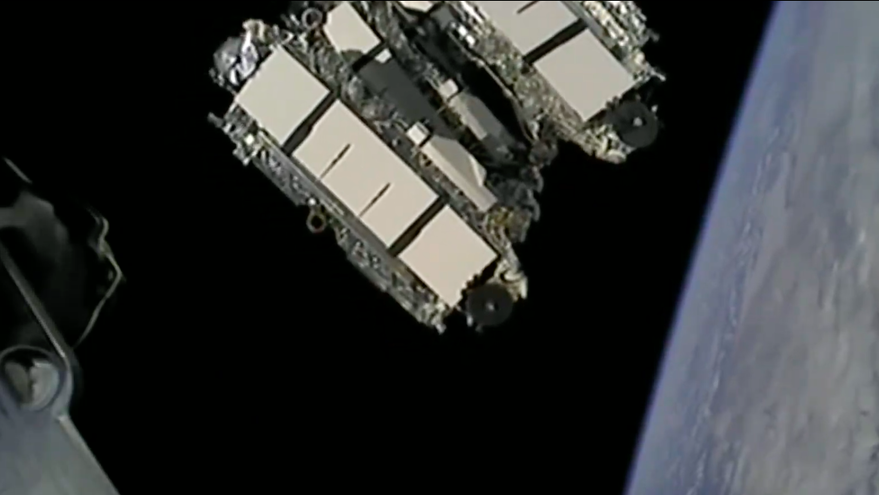WASHINGTON — SpaceX launched another set of Falcon 9 satellites Feb. 15, but suffered a rare failed landing of the rocket’s first stage during the mission.
The Falcon 9 lifted off from Space Launch Complex 40 at Cape Canaveral Space Force Station at 10:59 p.m. Eastern, after unfavorable weather conditions caused a one-day delay. The rocket released its payload of 60 Starlink satellites in orbit 65 minutes after liftoff.
The rocket’s first stage, however, did not land on a droneship in the Atlantic Ocean as planned. Video from the droneship around the time of landing showed a glow in the distance, suggesting a problem with the booster that either caused it to go off-course or to deliberately divert from the landing attempt. SpaceX did not immediately disclose what took place during the failed landing.
The failure broke a streak of 24 consecutive Falcon 9 launches with successful landings, either on droneships or on land. The last failure took place in March 2020, and was the second failure in three Falcon 9 launches. The March failure was caused by engine cleaning fluid that was trapped inside and interfered with a sensor, while the earlier failure was blamed on incorrect wind data.
The booster on this launch made its sixth flight. It first flew in December 2019 on a cargo Dragon mission, then was used for another cargo Dragon in March 2020. It subsequently launched a set of Starlink satellites, along with three SkySats for Planet, in June, followed by SAOCOM-1B in August and the NROL-108 mission for the National Reconnaissance Office in December.
The primary purpose of the mission, though, was a success, adding to the growing constellation of Starlink satellites. SpaceX is expanding its beta testing program, and now has more than 10,000 users in the United States, Canada and the United Kingdom, according to a Feb. 3 filing with the Federal Communications Commission.
SpaceX, though, is facing renewed opposition from some organizations regarding the nearly $885.5 million in FCC Rural Digital Opportunity Fund (RDOF) awards it won in December. In a recent white paper, the National Rural Electric Cooperative Association and National Rural Telecommunications Cooperative (NRTC) argued that the FCC should closely scrutinize SpaceX’s plans to provide broadband internet service via satellite. Those groups say bids by rural cooperatives for RDOF funding to provide broadband service were shut out by both SpaceX as well as fixed wireless networks.
“While delivering broadband service at the speeds promised by these applicants may appear to be viable, this service is currently in beta testing and commercially available on a limited basis in extremely limited areas, and questions remain,” the paper states. “Awarding bids to experimental and unproven LEO satellite service is a direct contradiction” to the rules of the RDOF program, it argued.
“I’m really struggling on the physics and economics” of satellite broadband, said Tim Bryan, chief executive of the NRTC, in a Feb. 4 call with reporters. He claimed there were “anecdotal reports” of people who signed up for Starlink beta but were having problems getting connections any faster than four megabits per second, but didn’t elaborate.
“Starlink’s performance is not theoretical or experimental,” SpaceX noted in its Feb. 3 FCC filing. The company said it had already demonstrated it could meet or exceed key performance tiers, including 100 megabits per second of data to customers and 20 megabits per second of data from them, as well latencies of 31 milliseconds or less.
Bryan said his group’s issue was how Starlink could scale up to serve larger numbers of customers. “My concern is mostly around the capacity not of one or two users, but what happens when you get to 20 or 30 or 40 or 50 thousand users,” he said.
“I have no doubt that the Starlink constellation could be successful in some areas, and in some cases, providing coverage over areas like the deep blue seas and those sorts of places,” he said. “I struggle to see how it’s going to reliably deliver 100-megabit service to the literally hundreds and thousands of customers in the census block groups that it bid for.”
